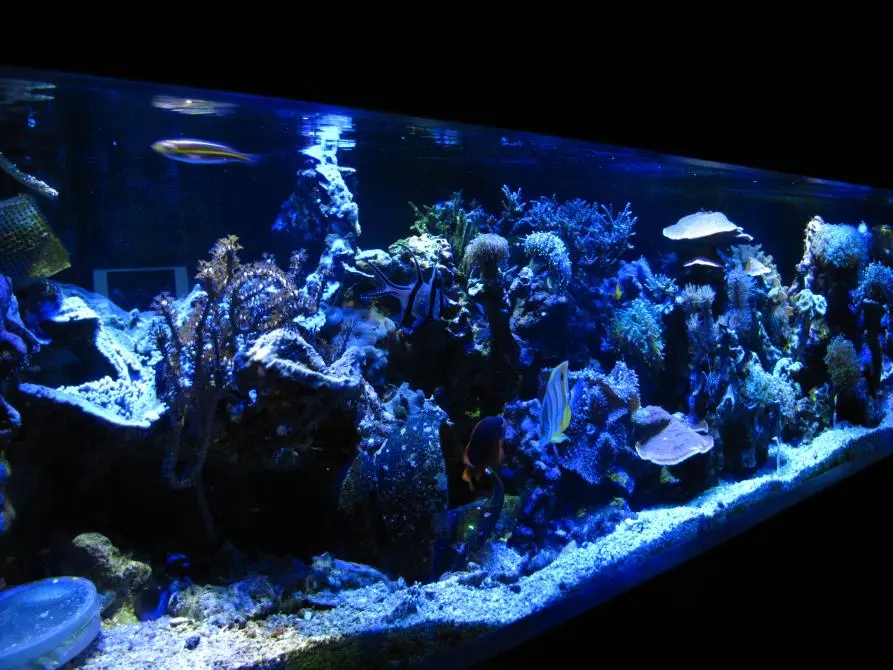Stunning 100-Gallon Reef Tank by unknown | Reef2Reef

Tank Specifications
Volume: 100 Gallons / 378 Liters
Dimensions (L × W × H):
72.0" ×
14.0" ×
14.0"
182.9cm ×
35.6cm ×
35.6cm
Equipment List
- Salt: unknown
Frequently Asked Questions
How often should I clean the glass and what tools do you recommend?
Cleaning the glass can be done once or twice a week, preferably with a soft sponge or scraper designed for aquariums to avoid scratching. Regular maintenance is essential to maintain visibility and prevent algae buildup.
What is your water change regimen, and why do you only do a few per year?
I perform water changes amounting to about 20% five times a year. This infrequent regime works for my tank because of its stability and established ecosystem. Additionally, I collect a small portion of Natural Sea Water (NSW) in the summer to mix into the water changes.
How do you maintain your water parameters without frequent testing?
I rarely test unless issues arise, relying on the years of stability in my tank. Regular maintenance includes adding driveway ice melter for calcium and Alkalinity every week, and based on my observations, my tank remains healthy without significant fluctuations.
Can you explain your reverse undergravel filter system?
My reverse undergravel filter system consists of several uplift tubes connected to a powerhead. Water is pumped slowly through these tubes down to the undergravel plates, allowing for efficient biological filtration with minimal maintenance.
How did you construct your protein skimmer, and what are its main features?
The protein skimmer was built from 4" PVC and acrylic tubing, standing five feet tall with a homemade venturi system. It operates with two pumps and has an ozone injection setup that ensures effective filtration. It maintains a healthy environment by removing waste and organic materials.
What role does the algae trough play in your tank's ecosystem?
The algae trough is designed to provide a space for algae to grow away from main corals, which helps in nutrient absorption and forms a habitat for water purifying organisms like tube worms. It also aids in maintaining water quality by filtering out harmful substances.
What types of food do you provide for your fish and invertebrates?
To keep my tank natural, I primarily feed live California blackworms and clams, supplemented with frozen mysis and live newborn brine shrimp hatched using a homemade hatchery. An automatic feeder dispenses sinking pellets soaked in fish oil for nighttime feeders.
How do you sustain spawning among your fish?
I ensure that my fish receive live foods such as brine shrimp and blackworms, which are crucial for their health. A constant food supply encourages spawning behavior, particularly for sensitive species like mandarins.
What steps do you take to maintain your corals?
I prioritize minimal intervention and allow natural processes to manage coral health. Occasionally, I perform light cleaning, and I ensure that the nitrate levels remain in a range conducive for growth, as observed by their ongoing health and reproduction.
How do you manage competing corals in your tank?
I allow corals like montiporas to compete and adapt their growth patterns naturally. This morphogenesis is part of the natural behavior of corals in a reef environment, where competition drives diversity and resilience.